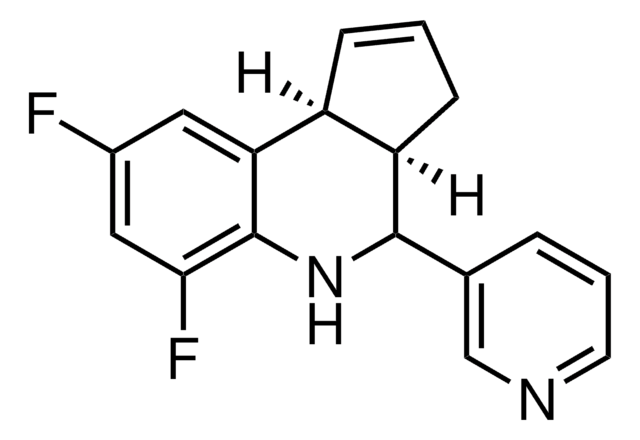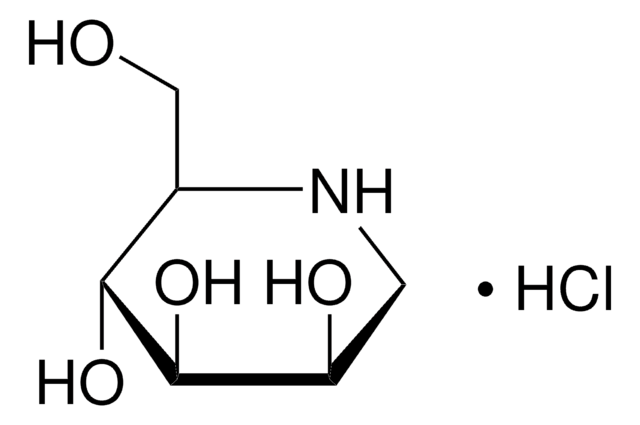B7651
Brefeldin A
from Penicillium brefeldianum, ≥99% (HPLC and TLC), powder, activator of the sphingomyelin cycle
Synonym(s):
Nectrolide, γ,4-Dihydroxy-2-(6-hydroxy-1-heptenyl)-4-cyclopentanecrotonic acid λ-lactone, Ascotoxin, BFA, Cyanein, Decumbin
About This Item
Recommended Products
product name
Brefeldin A, from Penicillium brefeldianum, ≥99% (HPLC and TLC)
biological source
Penicillium brefeldianum
Quality Level
Assay
≥99% (HPLC and TLC)
form
powder
solubility
DMSO: 10 mg/mL
antibiotic activity spectrum
neoplastics
Mode of action
protein synthesis | interferes
storage temp.
2-8°C
SMILES string
C[C@H]1CCC\C=C\[C@@H]2C[C@H](O)C[C@H]2[C@H](O)\C=C\C(=O)O1
InChI
1S/C16H24O4/c1-11-5-3-2-4-6-12-9-13(17)10-14(12)15(18)7-8-16(19)20-11/h4,6-8,11-15,17-18H,2-3,5,9-10H2,1H3/b6-4+,8-7+/t11-,12+,13-,14+,15+/m0/s1
InChI key
KQNZDYYTLMIZCT-KQPMLPITSA-N
Looking for similar products? Visit Product Comparison Guide
General description
Application
- increase CRISPR genome editing efficiency.
- facilitate the measurement of cytokine production
- block intracellular transports in cell culture experiments
Biochem/physiol Actions
Signal Word
Danger
Hazard Statements
Precautionary Statements
Hazard Classifications
Acute Tox. 3 Oral
Storage Class Code
6.1C - Combustible acute toxic Cat.3 / toxic compounds or compounds which causing chronic effects
WGK
WGK 3
Flash Point(F)
Not applicable
Flash Point(C)
Not applicable
Personal Protective Equipment
Certificates of Analysis (COA)
Search for Certificates of Analysis (COA) by entering the products Lot/Batch Number. Lot and Batch Numbers can be found on a product’s label following the words ‘Lot’ or ‘Batch’.
Already Own This Product?
Find documentation for the products that you have recently purchased in the Document Library.
Customers Also Viewed
Articles
Modulation of homology-directed repair (HDR) within the context of CRISPR-genome editing has led to the identification of small molecules that enhance CRISPR-mediated HDR efficiency in various cell types.
Modulation of homology-directed repair (HDR) within the context of CRISPR-genome editing has led to the identification of small molecules that enhance CRISPR-mediated HDR efficiency in various cell types.
Modulation of homology-directed repair (HDR) within the context of CRISPR-genome editing has led to the identification of small molecules that enhance CRISPR-mediated HDR efficiency in various cell types.
Modulation of homology-directed repair (HDR) within the context of CRISPR-genome editing has led to the identification of small molecules that enhance CRISPR-mediated HDR efficiency in various cell types.
Our team of scientists has experience in all areas of research including Life Science, Material Science, Chemical Synthesis, Chromatography, Analytical and many others.
Contact Technical Service













